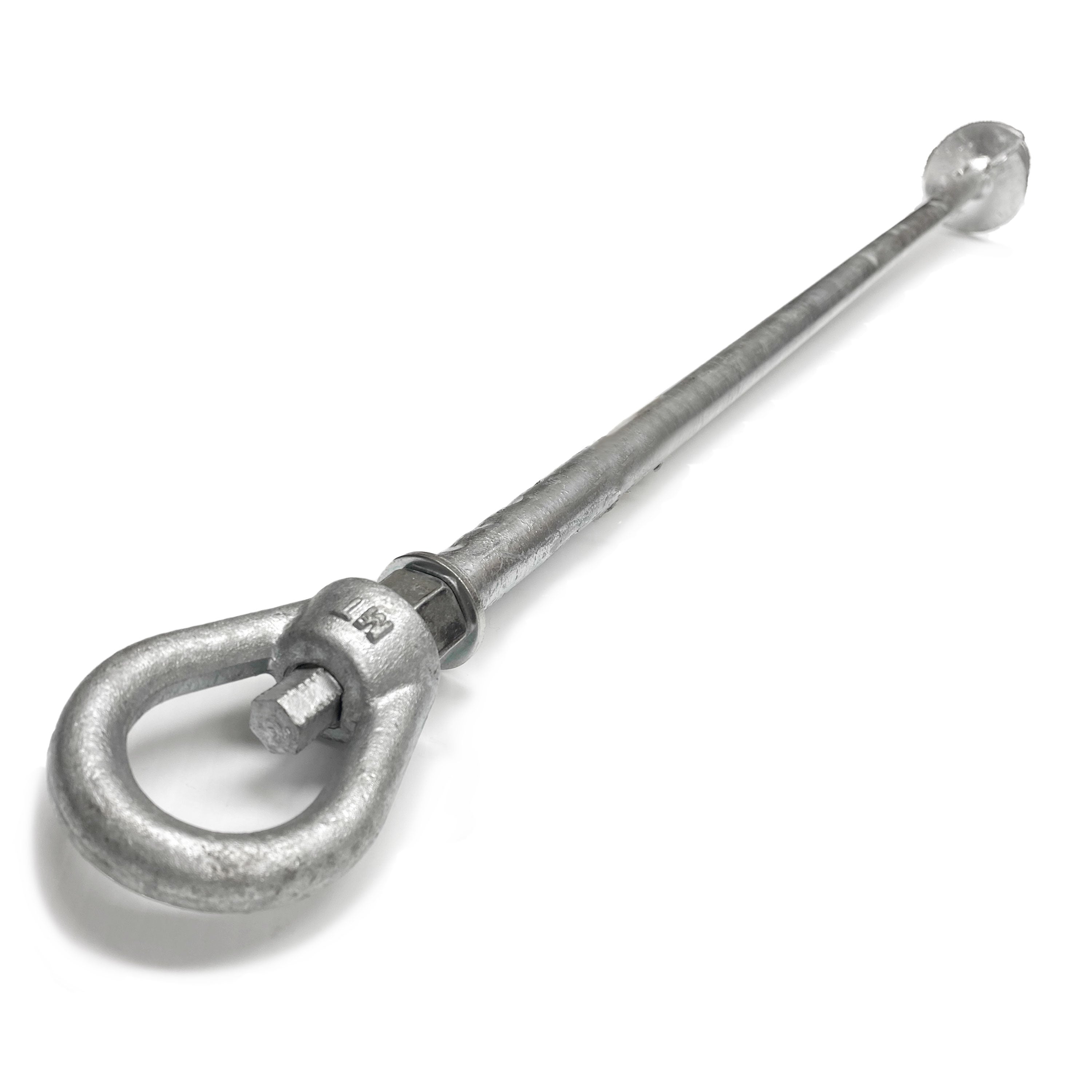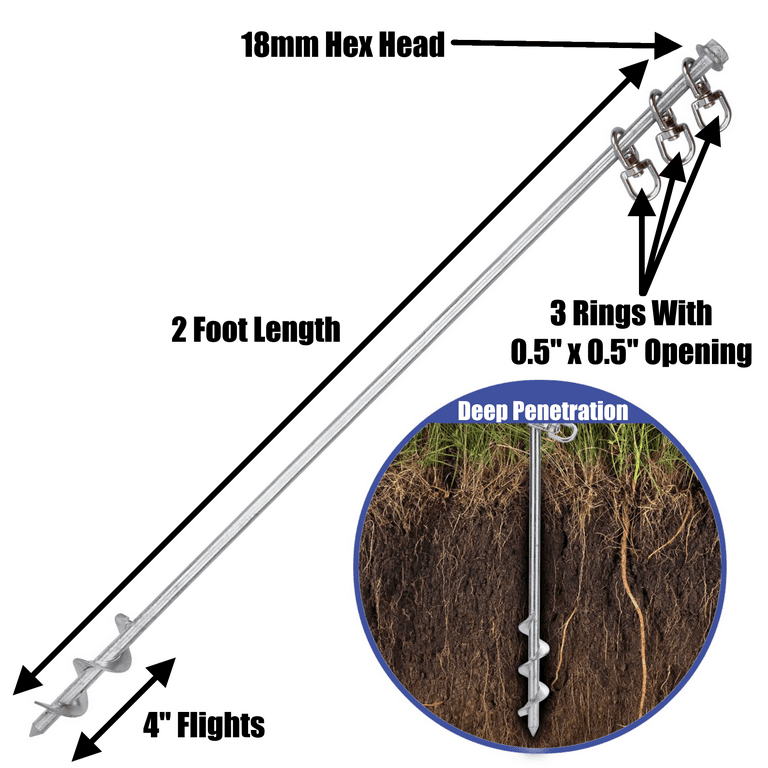Understanding the Main Categories of Ground Anchor Systems for Various Uses
Check Out the Various Sorts Of Ground Anchor for Your Following Project
From auger supports, which stand out in varied dirt conditions, to stake anchors developed for momentary installments, the choices are various. Additionally, concrete and screw supports present unique benefits in specific scenarios, while deadman supports are customized for applications requiring resistance to lateral pressures.

Auger Anchors
Auger anchors are a preferred option in numerous building and landscape design projects due to their special layout and reliable anchoring abilities. These anchors contain a helical screw-like shaft that is driven into the ground, enabling a protected and steady hold. The spiral layout assists in very easy installation and makes the most of resistance against lateral forces, making auger anchors especially reliable in applications such as fence, momentary frameworks, and disintegration control.
The setup procedure of auger supports is fairly simple. They can be by hand or mechanically mounted, depending on the dimension and required depth. This versatility permits for their use in varied soil conditions, from sandy to clayey surfaces. In addition, auger supports can be quickly removed and recycled, which adds to their cost-effectiveness and sustainability.
Among the significant advantages of auger anchors is their ability to disperse lots equally throughout the bordering dirt, minimizing the threat of dirt disruption and decreasing ecological impact. Furthermore, they are much less prone to heaving or loosening with time compared to standard anchoring methods. Subsequently, auger anchors are an exceptional choice for tasks needing trustworthy and long lasting anchoring remedies.

Risk Anchors
When it comes to protecting frameworks in a range of exterior applications, risk supports supply a dependable and uncomplicated service. These supports are commonly created from durable materials such as steel or aluminum, developed to endure environmental tensions while offering optimal security. Their simple design enables fast installation, making them a perfect option for short-term or irreversible anchoring requirements.
Risk anchors are especially helpful in safeguarding outdoors tents, covers, and various other lightweight frameworks versus wind and weather. They work by being driven right into the ground at an angle, developing a strong hold that resists pull-out forces - Ground Anchor. The performance of stake anchors depends upon several elements, including dirt type, dampness material, and the angle of setup
For included safety and security, many risk supports feature attachment points for bands or ropes, enabling for stress modifications as required. In applications such as landscape design or construction, they can effectively maintain tools or structures on unequal surface. Overall, risk anchors give a flexible and cost-effective option for protecting numerous exterior installments, making them a recommended selection for professionals and DIY fanatics alike.
Concrete Anchors
Concrete supports give a robust remedy for protecting structures to concrete surfaces, ensuring security and safety and security in numerous applications. These anchors are vital for tasks ranging from residential constructions to large-scale industrial installations. They can be found in various types, including growth supports, adhesive supports, and undercut anchors, each made for certain anchor tons requirements and ecological conditions.
Sticky anchors make use of high-strength epoxy or material to bond the support to the concrete, using remarkable load-bearing capacities, particularly in split concrete situations. Undercut anchors create an unique shape within the concrete, providing outstanding holding power, especially in applications where tensile lots are widespread.
Selecting the appropriate concrete support involves considering aspects such as the weight of the lots, the problem of the concrete, and environmental problems. Proper installment methods are critical to make sure ideal performance and integrity. When performed properly, concrete anchors dramatically improve the structural stability of different jobs, making them essential in contemporary building and construction methods. Understanding the details needs of your task will certainly assist in choosing the right kind of concrete support for the task.
Screw Anchors

Screw supports are a versatile securing remedy that can be efficiently used in a selection of applications where typical concrete anchors may not be sufficient. These anchors contain a helical style that permits them to be conveniently driven into the ground, making them optimal for use in soil and various other substrates. Their special structure provides excellent holding power and resistance to pull-out pressures, making them suitable for numerous projects, from landscaping to structural assistance.
One of the key advantages of screw anchors is their simplicity of installation. They require very little tools and can frequently be installed without the demand for excavation, which saves both time and labor costs. In addition, screw anchors can be removed and recycled, using a sustainable service for temporary applications.
Screw supports are especially beneficial in areas where view it dirt conditions are challenging, such as loose or sandy soils. Their ability to be mounted at differing depths allows for modification based on details job demands. On the whole, screw supports offer a trustworthy and effective securing technique, making them an exceptional choice for engineers and contractors looking for efficient remedies for their tasks.
Deadman Anchors
Deadman anchors act as a robust solution for maintaining frameworks in difficult problems, specifically where typical anchoring methods might fail. These supports include big, hefty things hidden underground, which develop resistance versus side pressures. The layout typically involves a straight part, such as a block of concrete or a metal plate, hidden in the soil, to which cable televisions or bands are attached.
The effectiveness of deadman anchors lies in their capacity to disperse lots over a bigger area, minimizing the risk of failure in unpredictable soil problems. They are particularly valuable in applications such as retaining walls, short-term structures, and incline stablizing, where dirt motion can endanger the honesty of the framework.
Installment of deadman anchors needs careful planning to ensure they are positioned at the appropriate deepness and orientation, maximizing their load-bearing ability. While they may need even more labor and product than light-weight supports, their dependability in damaging problems makes them indispensable for long-term jobs. Additionally, deadman anchors are versatile and can be adapted to various applications, making them a best option for engineers encountering unique difficulties in their jobs.
Final Thought
In summary, picking the ideal kind of ground support is crucial for ensuring security and safety in various projects. Auger supports master varied soil problems, while stake supports match short-lived applications. For concrete surface areas, expansion and glue supports supply reputable alternatives, and screw anchors use versatility in difficult surfaces. Deadman supports are specifically efficient in resisting side forces for maintaining walls. Mindful factor to consider a knockout post of these options will boost job results and architectural stability.
Furthermore, concrete and screw anchors present unique benefits in specific situations, while deadman supports are customized for applications calling for resistance to lateral pressures - Ground Anchor.Auger supports are a popular option in various building and landscape design jobs due to their distinct style and effective anchoring abilities. They come in various kinds, consisting of growth anchors, sticky supports, and undercut supports, each made for certain tons needs and ecological problems
Adhesive supports make use of high-strength epoxy or resin to bond the support to the concrete, supplying premium load-bearing abilities, specifically in split concrete situations. On the whole, screw anchors give a effective and reputable anchoring method, making them an outstanding option for contractors and designers looking for reliable options for their jobs.